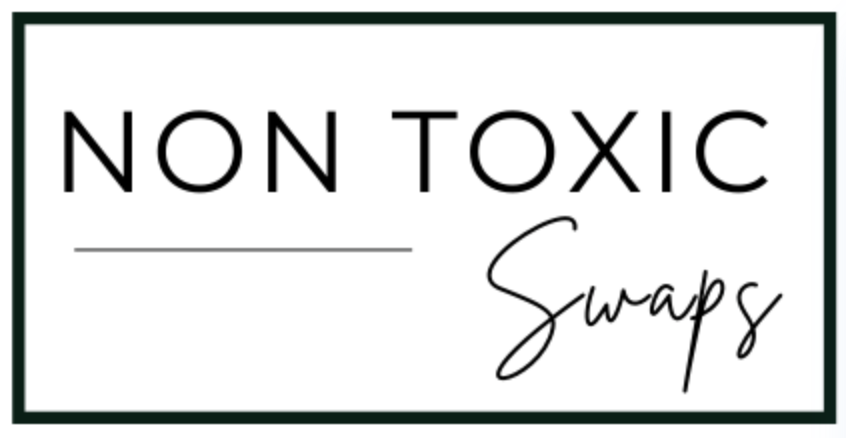Last Updated on March 22, 2025 by NonToxicSwaps
What is the safest eyeshadow? Check out these non toxic eyeshadow options that will eliminate chemical ingredients from your makeup routine.

Affiliate disclosure: As an Amazon Associate, we may earn commissions from qualifying purchases from Amazon.
Can eyeshadow be toxic?
Eyeshadows are available in so many beautiful colors and shades, but many are made from ingredients that can be harmful to our health.
Carcinogenic ingredients do not belong in any products that go on our skin, especially since our skin absorbs 60% of what we put on it in 26 seconds! And for an area as sensitive as the eyes, we ESPECIALLY do not need toxic ingredients in our makeup.
Top brand eyeshadows include toxic ingredients like propylparaben (and other parabens), dyes like black no. 2, blue no. 1, red no. 40), talc, fragrance, quaternium-15, phenoxyethanol, and more.
These ingredients are known to be linked to cancer, skin, eye, and respiratory irritation, allergies, organ toxicity, endocrine disruption, ecotoxicology, and harm to the reproductive system.
Still not conviced? Read this:
“According to Harvard research, mainstream cosmetic products, such as mascara, eye shadow, eyeliner & eye makeup remover typically contain preservatives to prevent microbial growth. The concentrations approved for consumer use are toxic to human ocular surface & adnexal cells.” [Read the rest of the article here.]
Ingredients to Avoid in Eyeshadow
- Aluminum: neurotoxin (PubChem ID: 5359268), potentially linked to breast cancer (PMID: 16045991) and Alzheimer’s at a high rate of exposure (PMID: 26494454)
- Talc: potentially contaminated with asbestos (carcinogen), while there is much debate over the research of talc, it can potentially be contaminated with asbestos (carcinogen) (PMID: 31469695)
-
Dyes: can be carcinogenic, genotoxic and offer no benefit to the product other than color (example: Red 40, Blue 1, Yellow 5) (PMID: 23026007)
- Phenoxyethanol: deemed generally safe at a 1% concentration, however it’s production process, ethoxylation, can potentially contaminate phenoxyethanol with 1,4-dioxane and ethylene oxide (see above for ethoxylated ingredient description) (PubChem CID: 31236)
- Phthalates: preservative linked to reproductive & developmental toxicity, potentially linked to ADD and learning disabilities (PMID: 24267794) potential carcinogen & endocrine disruptor (PubChem CID: 3026)
- Parabens: preservatives linked to endocrine disruption (PMID: 29596967), known to be carcinogenic due to endocrine disruption (PMID: 36746253) Parabens may be listed as methylparaben, ethylparaben, propylparaben, butylparaben, isobutylparaben, isopropylparaben, and benzylparaben.
I try to stay away from titanium dioxide in my makeup as much as possible, since it is a potential carcinogen. I find it especially difficult to find a titanium-free eyeshadow because it’s usually included to add an opaque-ness to eyeshadow shades. IF I go with an eyeshadow that includes this, I make sure it’s as low as possible in the listed ingredients. (Products ingredients are listed by highest to lowest quantity.)
Because I love a shimmer to my eyeshadow, I’ve included a few of those options below.
Non Toxic Eyeshadow Brands
- 100% PURE Pressed Powder Eye Shadow
- Alima Pure | Pressed Eyeshadow Singles
- Alima Pure | Loose Mineral Eyeshadow Singles
- Honeybee Gardens ‘Canyon Sunset’ Refillable Eye Shadow Palette
- Burt’s Bees 100% Natural Origin Eye Shadow Palette Trio | Dusty Woods
- Honeybee Gardens Nude Renaissance Refillale Eye Shadow Palette
- Honeybee Gardens Pressed Powder Eye Shadow, Single Pan



